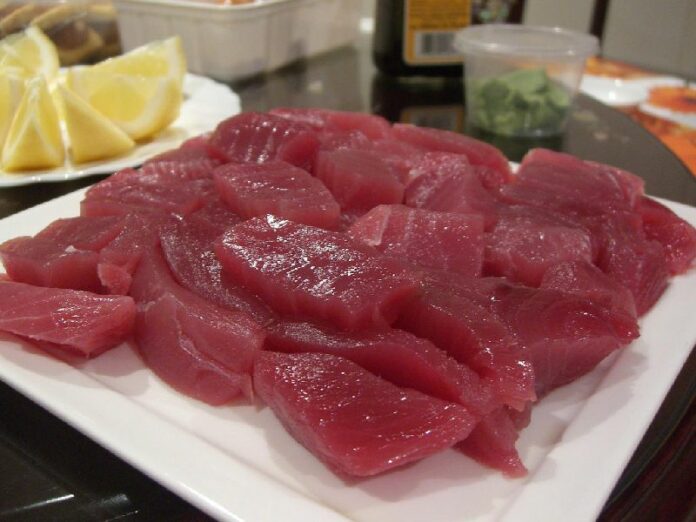
BANGKOK — When police busted two Vietnamese nationals for allegedly mixing up bogus orange juice, the public received a grim reminder that what they eat is not always what it seems.
Following the fake orange juice sightings which bloomed like algae on social media, the buzz Thursday moved on to a report of another hungry question about tainted food: Old sashimi dyed to look fresh.
Fake OJ Prompts Nationwide Crackdown, Social Media Panic
Nantarika Chansue, a Chulalongkorn University veterinarian and professor, publicized online Wednesday her discovery of unusually colorful yellowfin tuna sashimi from an unnamed Japanese restaurant. So she brought it to her lab for a quick test.
According to her results – later discredited as junk science – the meat’s color was artificial.
“I put the fish in the water for a few minutes. The color clearly came out. The fish only soaked five minutes becomes white and pale!” Nantarika wrote in a post shared more than 17,000 times. “Why do they have to mix color into it? It will only lead to danger.”

Despite the fact her claims were later debunked, the post tapped into greater anxiety over food safety and prompted the Food and Drug Administration to launch inspections of fish served in Japanese restaurants nationwide.
After Nantarika’s widely shared post was reported by several news agencies, a biologist at the same university said the reddish color was in fact a protein in found in the muscle of yellowfin tuna called myoglobin, and not food coloring.
“Myoglobin is a type of protein that gets dissolved in water very [easily], so it’s not strange that when you put the reddish fish piece in water, myoglobin will be dissolved into water, leaving only white flesh,” wrote Jessada Denduangboripant, a well-known debunker of hoaxes.
He added, “This is similar to when we grill pork and beef, and red liquid comes out. Many people think it’s blood, but in fact it’s water and myoglobin.”
Nantarika has not offered a response to her original test; her Facebook posts suggests she’s currently abroad.
Five Japanese restaurants have already been tested, according to the FDA’s Paisarn Dunkhum. He did not name the restaurants. The results should be available next week.
Related stories:
Couple Makes Fake OJ. Couple’s Photos Posted Online. Couple Arrested.
Pattaya Restaurant Owner Refutes 'Pesticide-Spraying' Video










































